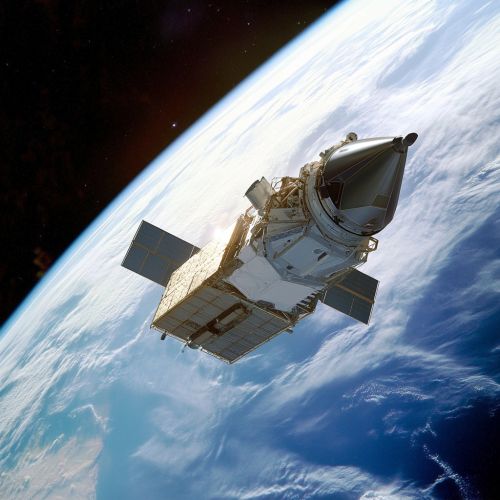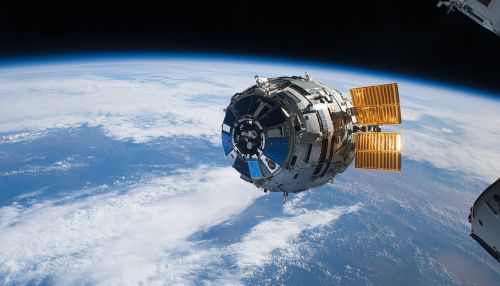Advanced Composition Explorer
Introduction
The Advanced Composition Explorer (ACE) is a NASA space probe designed to study and measure the composition of solar wind, interstellar matter, and cosmic rays. Launched on August 25, 1997, ACE has provided invaluable data that has enhanced our understanding of the heliosphere and the processes that govern space weather. The spacecraft is equipped with a suite of scientific instruments that allow it to analyze particles from various sources, including the Sun, the interstellar medium, and distant supernovae.


Mission Objectives
The primary objectives of the ACE mission are to:
- Measure and analyze the elemental, isotopic, and ionic charge state composition of matter from the solar wind, the interstellar medium, and cosmic rays.
- Provide near-real-time solar wind data to support space weather forecasting.
- Study the acceleration and propagation of energetic particles in the heliosphere.
- Investigate the isotopic composition of galactic cosmic rays to understand nucleosynthesis and the chemical evolution of the galaxy.
Scientific Instruments
ACE is equipped with nine scientific instruments, each designed to measure different aspects of particle composition and energy. These instruments include:
Solar Wind Ion Composition Spectrometer (SWICS)
SWICS measures the mass and charge state of heavy ions in the solar wind. It provides data on the elemental and isotopic composition of solar wind particles, which helps in understanding the processes occurring in the solar corona and the acceleration mechanisms of the solar wind.
Solar Wind Electron, Proton, and Alpha Monitor (SWEPAM)
SWEPAM measures the density, velocity, and temperature of electrons, protons, and alpha particles in the solar wind. This instrument is crucial for monitoring the solar wind conditions and providing data for space weather forecasting.
Ultra-Low Energy Isotope Spectrometer (ULEIS)
ULEIS measures the composition and energy spectra of low-energy ions. It helps in studying the acceleration and transport of particles in the heliosphere and provides insights into the sources of these particles.
Cosmic Ray Isotope Spectrometer (CRIS)
CRIS measures the isotopic composition of galactic cosmic rays. This instrument provides data on the origin and propagation of cosmic rays, as well as information on the processes of nucleosynthesis in stars.
Solar Isotope Spectrometer (SIS)
SIS measures the isotopic composition of solar energetic particles. It helps in understanding the processes of particle acceleration and transport in the solar corona and the heliosphere.
Electron, Proton, and Alpha Monitor (EPAM)
EPAM measures the fluxes of electrons, protons, and alpha particles over a wide range of energies. This instrument is essential for studying the acceleration and propagation of energetic particles in the heliosphere.
Solar Energetic Particle Ionic Charge Analyzer (SEPICA)
SEPICA measures the ionic charge states of solar energetic particles. It provides data on the processes of particle acceleration and transport in the solar corona and the heliosphere.
Magnetometer (MAG)
MAG measures the magnetic field strength and direction in the solar wind. This instrument is crucial for understanding the interactions between the solar wind and the Earth's magnetosphere, as well as the processes occurring in the heliosphere.
Time-of-Flight Mass Spectrometer (TOF/MS)
TOF/MS measures the mass and energy of ions in the solar wind. It provides data on the elemental and isotopic composition of solar wind particles, which helps in understanding the processes occurring in the solar corona and the acceleration mechanisms of the solar wind.
Mission Achievements
Since its launch, ACE has made several significant contributions to space science, including:
- Providing continuous, high-quality data on the composition of solar wind, interstellar matter, and cosmic rays.
- Enhancing our understanding of the processes of particle acceleration and transport in the heliosphere.
- Contributing to the development of space weather forecasting models by providing near-real-time solar wind data.
- Improving our knowledge of the isotopic composition of galactic cosmic rays and their origins.
- Supporting other space missions by providing valuable data on the space environment.
Data Utilization
The data collected by ACE is used by scientists worldwide to study various aspects of space physics and astrophysics. The near-real-time solar wind data provided by ACE is crucial for space weather forecasting and helps in protecting satellites, astronauts, and ground-based technological systems from the effects of space weather.
Future Prospects
While ACE has already exceeded its expected mission lifetime, it continues to provide valuable data. The spacecraft's instruments remain operational, and it is expected to continue contributing to space science for the foreseeable future. Future missions may build on the data and findings from ACE to further our understanding of the heliosphere and the processes that govern space weather.
